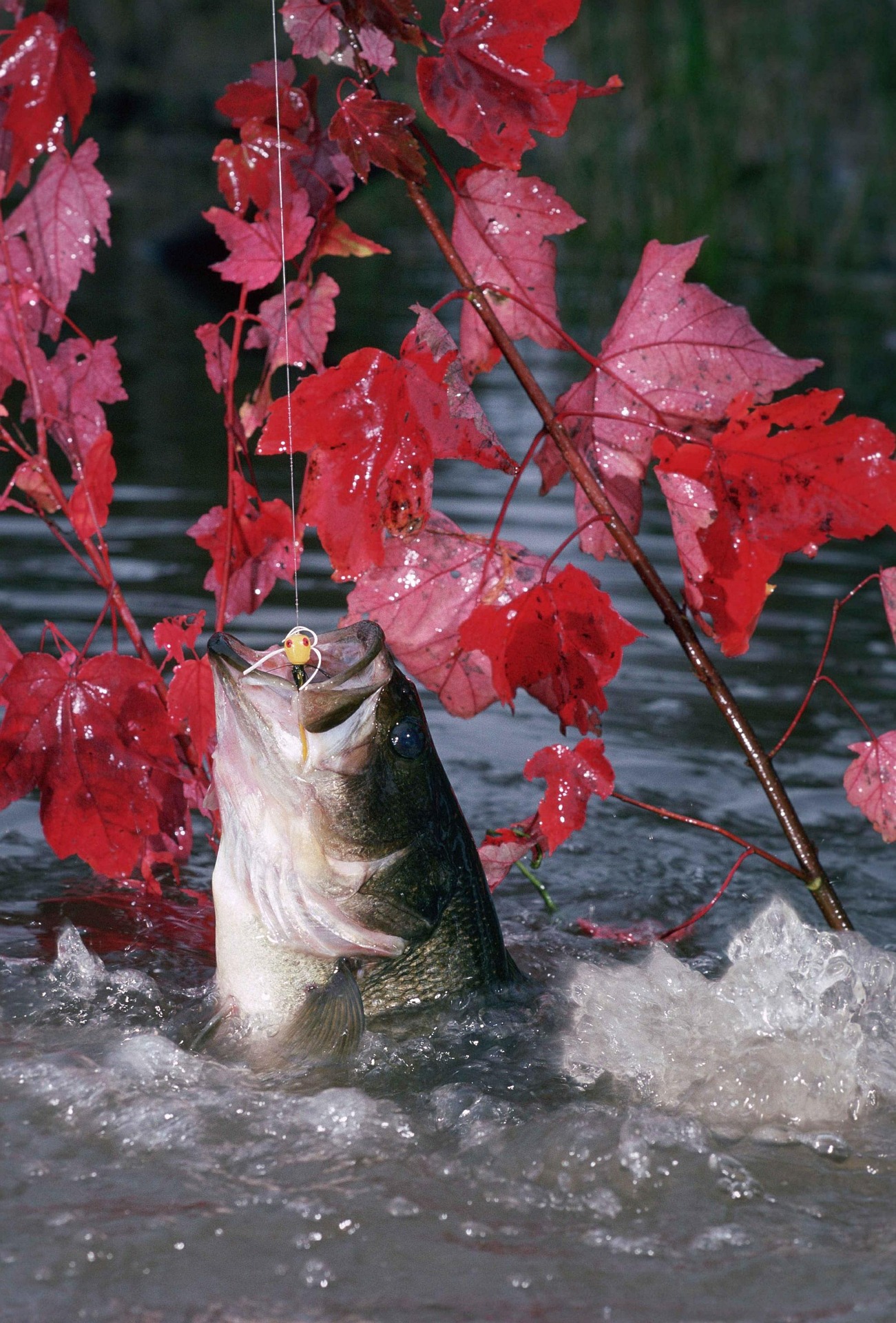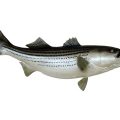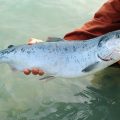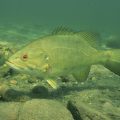
The Micropterus salmoides, or more commonly the Widemouth, Bigmouth, Bucketmouth, or Largemouth Bass, is a freshwater game fish. The Largemouth Bass is the state fish of Georgia and Mississippi. It is the state freshwater fish of Florida and Alabama, and it’s the state sport fish of Tennessee. Although its original habitat was small, by comparison, the Largemouth Bass can be found throughout most of the lower 48 states, Hawaii, and other places like Guatemala. This happened between the years 1870 and 1894 through both accidental stocking, and intentional stocking for sport fishing. In New Brunswick, the Largemouth Bass is considered an invasive species, and it has been blamed for the extinction of the Atitlan Grebe (a large waterbird that used to inhabit Lake Atitlan, Guatemala.)
Juvenile Bass
Bass under two inches, a ‘fry,’ feed on zooplankton and insect larvae. At around 2 inches long that all changes. Bass are extremely opportunistic, and predatory creatures. The juveniles will eat mostly small fish. This can include scuds, insects and small shrimp. Adult Largemouth Bass will eat small fish like the bluegill, snails, snakes, salamanders, bats, crawfish, water birds, frogs, lizards, rats, and mice. Their diet also include perch, ciscoes, shiners, sunfish, and younger fish of other larger species like the catfish, walleye, pike, trout, and striped bass. These fish can eat anything up to half its body size, and will try to eat anything that moves. These are aggressive fish that lurk in the shadows lunging out at its prey.They hunt by their exceptional sense of smell, and can locate their prey by following its scent trail. If a Largemouth Bass can get its large mouth around it, the Bass will try to eat it.
Types of Areas they live in
The status of the Largemouth Bass as an invasive species in some regions has a lot to do with its eating habits, as well as its ability to adapt. Largemouth bass can live in a variety of environments. They will thrive in water with a temperature range of 68˚F- 78˚F and will spend most of their time no deeper than 20ft under the surface of the water. They prefer calm cool water but can, and do, adapt to other environments. They prefer to hide between rocks, under roots and limbs of sunken trees, and within water vegetation. These fish will live in shallow water, large lakes, ponds, weed choked bodies, and clear deep reservoirs. While they’ll grow slower in weedy water because of difficulty acquiring prey, the strain of this type of environment only slows them down. With little cover, bass can devastate a prey population. Their ability to adapt, and even change their diet when required, and the fact that they’ll try to eat anything that moves makes the Largemouth Bass the apex predator in most of its environments. With very few predators of their own, they find little competition in taking over wherever they live. They are most active early in the morning or late in the afternoon.
Mostly a solitary fish, they do occasionally congregate in groups when there is ample food supply. The fry will stay in a school, or a ‘brood swarm,’ for a few weeks but once they’re able, they move on.
Reproduction
As for breeding, the males are the ones which prepare the nests and protect the young. The Largemouth male will move into a shallow bay or flat and sweep away the debris. He’ll prepare a nest about one to five feet below the water’s surface on a hard bottom. Once it’s built the female will lay her eggs. A female can lay between 2,000 and 40,000 eggs at once, and this number is usually at a rate of 2,000 to 7,000 eggs per pound of her own body weight. After the female has deposited her eggs the male will deposit his milt. The female will head out for deeper water, and the male will stay with the nest to guard it. The brood swarm of fry stay with the male for those three or four weeks when they remain together as a group.
Physical Characteristics
The Largemouth Bass color varies from olive to pale green. Their bellies are white to yellowish, with their backs and sides being very dark. They have a black lateral band made up of smaller diamond shapes that runs from head to tail. If this band is dark on a single fish then the fish has been in shallower water where it’s been exposed to more sunlight. If a single fish has been in deeper water for a while the band will be lighter in color. The dorsal fin has a front section that is very spiny, and a softer back part that is larger. The front and back sections of this dorsal fin are separated by a deep dip between them. The Largemouth Bass is distinguished from other Black Bass by its namesake: It’s large mouth. The upper jaw of this fish extends up beyond the rear edge of the eye giving this fish the tool it needs to act on its desires to eat anything it can. They have an average life span of about 16 years, but reaching 20 years is not unheard of.
A five pound Largemouth Bass is considered large by anglers and the size of the fish will usually indicate its age. This is because they never stop growing. The females tend to be larger than males of the same age. For this reason, catch and release when fishing is encouraged in order to protect the species population.
Theoretically, because the Largemouth is known to be an aggressive fish and an apex predator that will try to eat anything that moves, if a fish were to live long enough in an optimum environment it could turn the table and eat the fisherman. Amusingly, it would certainly try.











Pingback: How to properly attach a spinnerbait | Reel Fishing Guru
Pingback: Are Bass Bottom Feeders? | Reel Fishing Guru
Pingback: Are Grouper Related to Bass? | Reel Fishing Guru
Pingback: Are Bass Cannibals? | Reel Fishing Guru
Pingback: Is Grouper a Mild-Tasting Fish? | Reel Fishing Guru